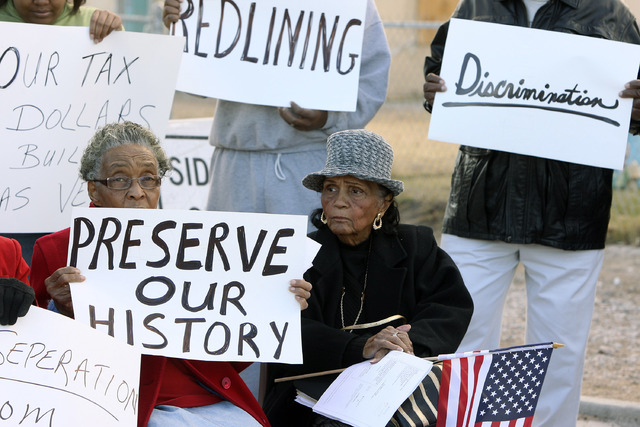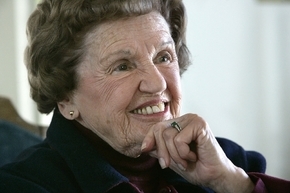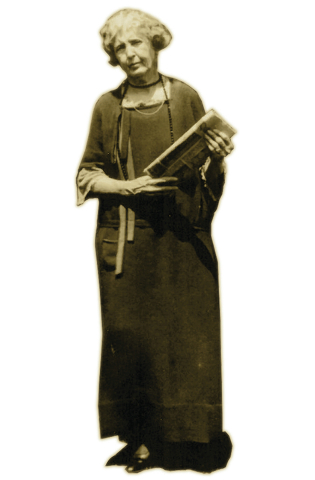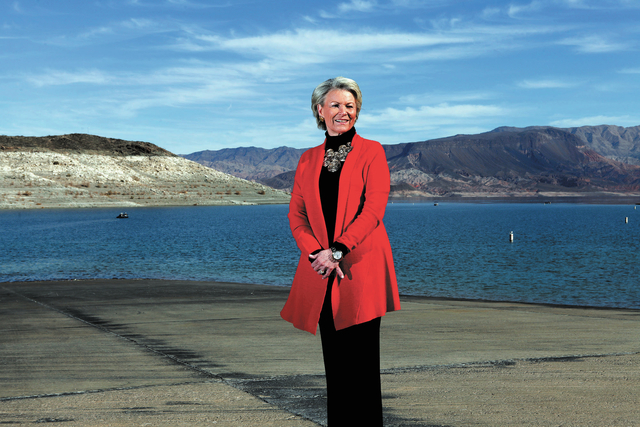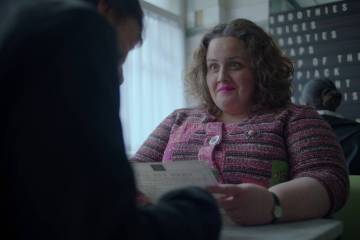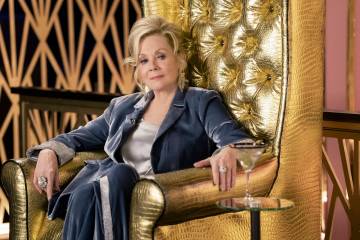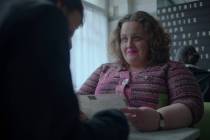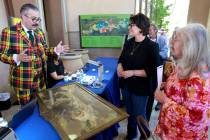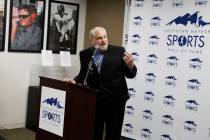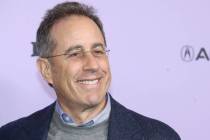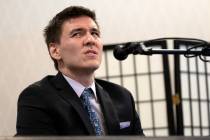Documentary series celebrates key women in Nevada history
For the past 100 years in Nevada, countless women have fought for equal rights and the ability to make a name alongside men.
With a new series put together by UNLV’s Women’s Research Institute of Nevada and Vegas PBS, the history of many of those women and the milestones they accomplished are being recognized in the sesquicentennial project “MAKERS: Women in Nevada History.”
“Nothing like this has ever been done in the history of the state,” says Joanne Goodwin, director of the Women’s Research Institute of Nevada.
The institute was created 15 years ago to preserve, collect and analyze information on women in the state and the role they played in social and economic development.
Three years ago, center officials started thinking about programming to honor the 100th anniversary of the women’s suffrage movement in Nevada.
“We were looking around other states, and the programs they had going on were enormous,” Goodwin says.
She adds the institute entered talks with Vegas PBS to create programming honoring women’s history in Nevada.
Goodwin says the idea for the series came from a documentary national PBS did last year called “MAKERS: Women Who Make America.”
“This is the same thing, we’re just focusing on Nevada,” she says.
Barbara Agonia, who has been involved with the institute since its beginning, says the series is needed.
“It’s a part of our history that tends to be ignored,” she says. “We talk about presidents, generals, wars and dictators but we gloss over women’s contributions to history.”
Agonia says it’s important to recognize the role women played not only in the nation’s founding but also how Nevada was shaped.
“We have had time moments in our history when Nevada has realized, ‘Gee, women are people, too,’ ” she says. “It’s important to celebrate.”
The three-part series is scheduled to air on KLVX-TV, Channel 10, beginning with “The Groundbreakers” at 10 p.m. Tuesday (with repeats at 7:30 p.m. Oct. 27 and 12:30 a.m. Oct. 28).
The center had already been gathering biographical information on women’s history. They then created a list of women from the past 100 years who had a hand in advancing Nevada.
“It was an enormous list,” she says.
The series begins in the early 1900s and talks about women’s involvement with building communities, businesses and education.
The first episode also talks about the campaign by women to gain the right to vote in Nevada. Women won the right to vote in the state in 1914, six years before the 19th Amendment was passed.
The first episode highlights women such as Helen Stewart, a rancher, businesswoman and pioneer of Southern Nevada; and Maude Frazier, a school superintendent and legislator who advocated for a state university campus in Las Vegas and was appointed the first female lieutenant governor of Nevada.
It also talks about Magnesium Maggie, coined by Irene Rostine for women who worked in the Basic Magnesium Plant in Henderson.
Goodwin notes the second episode starts after World War II.
“It is usually known as the time of economic boom,” she says.
It was during this period that women began to make strides in the hotel and casino industry as well as construction, politics and business.
The era, which goes through the 1970s and ’80s, is also when legal changes in women’s rights began to transform the community.
Emerging leaders such as Kitty Rodman, a businesswoman and philanthropist; Selma Bartlett, a former banker; and Claudine Williams, who owned the Holiday Casino, helped lead the way and open doors.
Others mentioned in the second episode include Barbara Vucanovich, the first woman to be elected to Congress in Nevada; Sarann Knight-Preddy, the first black woman to own a gaming license in Nevada and an advocate for African-American and women’s rights; and Sue Wagner, the first woman elected lieutenant governor of Nevada.
Agonia is also featured for her contributions.
“I never saw myself as a radical,” she says. “I just worked in places I could help.”
Agonia came to Las Vegas in 1969 to teach.
While finishing her master’s degree, she became involved in women’s rights issues around town.
“It was the time of the (Equal Rights Act),” she says. “I couldn’t quite understand why women didn’t have the same rights as men. We deserved the same rights.”
Along with joining the crusade for equality, Agonia broke through barriers and became one of the first faculty members at what was then Clark County Community College.
She continued to be involved with women’s issues, becoming an activist against rape, domestic violence and homelessness among women.
“But I don’t know why I am being featured,” she adds. “It is humbling being alongside the women who I have looked up to along the way. It kind of scares me.”
Because women from the earlier eras opened doors, Goodwin says after the 1990s, where the third part, “Into the Future,” begins, there were more women involved in nearly every aspect of life. For instance, it was a time Nevada elected its first woman Supreme Court Justice, Miriam Shearing, and all around women began being recognized for their contributions in science, business and community activism.
“We have Renee West, who was the first president for two casinos, the Luxor and the Excalibur,” Goodwin says.
Other figures include Las Vegas Mayor Carolyn Goodman; Pat Mulroy, the former general manager for the Las Vegas Valley Water District; former Assemblywoman Barbara Buckley, who was the first woman in Nevada’s history to serve as speaker; Tina Kunzer-Murphy, the first woman athletic director at UNLV; Rose McKinney-James, a businesswoman and longtime advocate for clean energy; and Rosemary Flores, a community leader and organizer in the Latino community.
Condensing these stories into three short features was a difficult task.
“We are already thinking about our next steps,” Goodwin says.
Over the course of their research, the institute conducted about 50 interviews with Nevada women, some who were “makers” and others who had information about prominent figures for the series.
“If each speaker got a minute or a minute and a half, that was generous,” Goodwin says.
She adds they want to put all those interviews online for people to be able to hear the full stories.
Because of time constraints, Goodwin hopes that next year they can do another series.
The center has already brainstormed ideas such as a segment on women in politics.
Goodwin also hopes to work with the Clark County School District to put these stories into curriculum.
“It is important to pass this information on to the next generation so they learn about the involvement of women and men in the creation of the state,” she says.
With a series like this, Goodwin says it could inspire children to continue to break through barriers.
“When children see someone who looks like them doing these roles, it changes the way they think,” Goodwin says. “They start believing they can do that too.”
Contact reporter Michael Lyle at mlyle@reviewjournal.com or 702-387-5201. Follow @mjlyle on Twitter.
SEE THE ‘MAKERS’
Here is the viewing schedule for "MAKERS: Women in Nevada History" on KLVX-TV, Channel 10:
• Episode One, "The Groundbreakers," 10 p.m. Tuesday, 7:30 p.m. Oct. 27 and 12:30 a.m. Oct. 28.
• Episode Two, "Moving Forward," 10 p.m. Oct. 28, 7:30 p.m. Nov. 3 and 12:30 a.m. Nov. 4.
• Episode Three, "Into the Future," 10 p.m. Nov. 4, 7:30 p.m. Nov. 10 and 12:30 a.m. Nov. 11.



